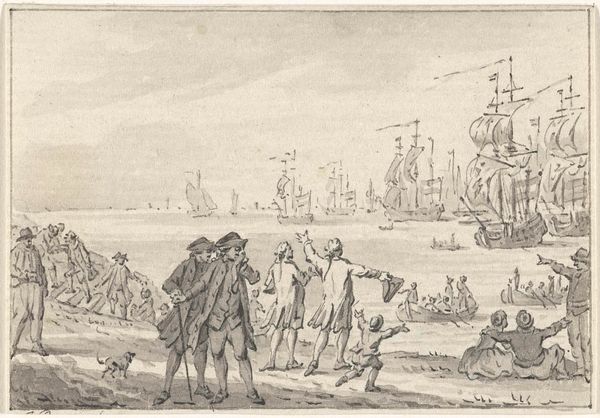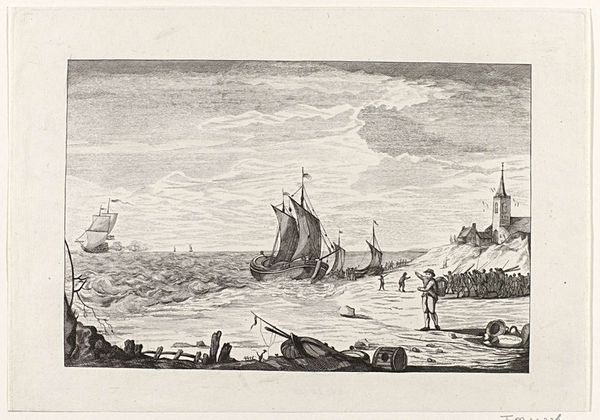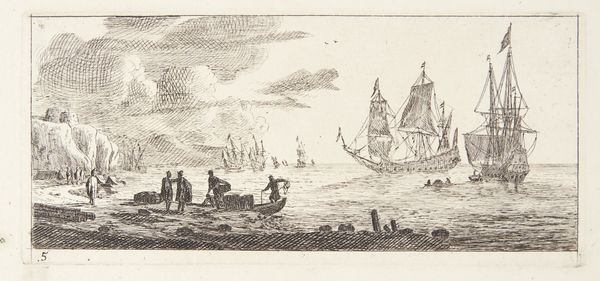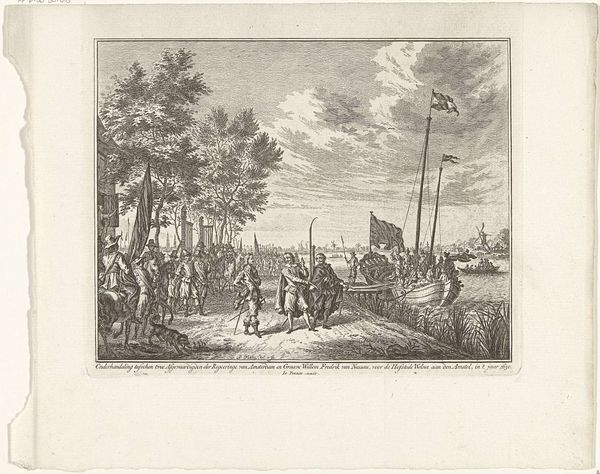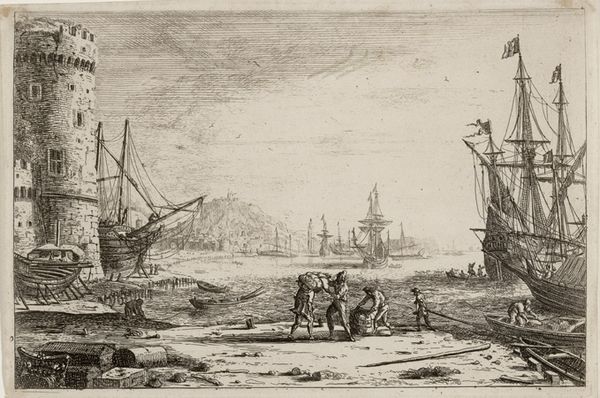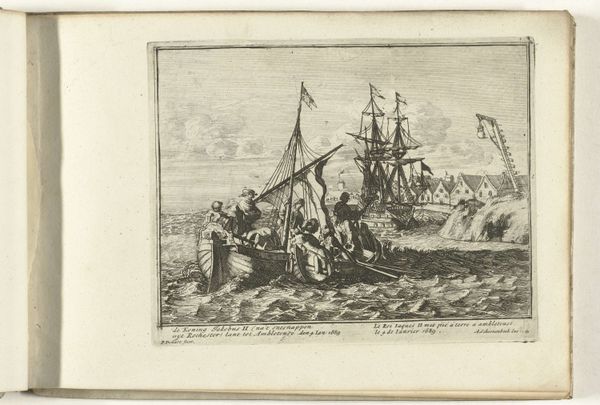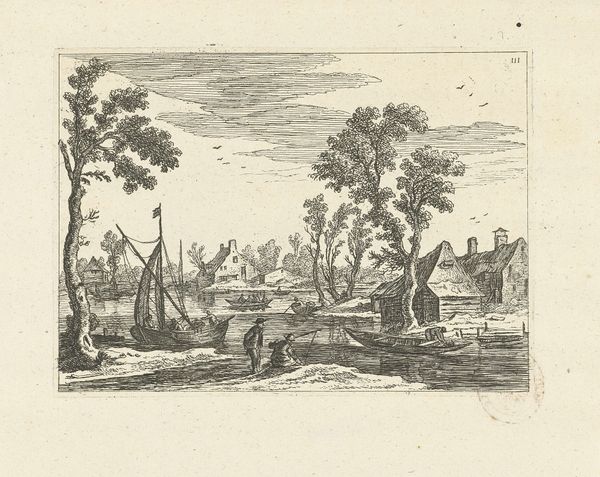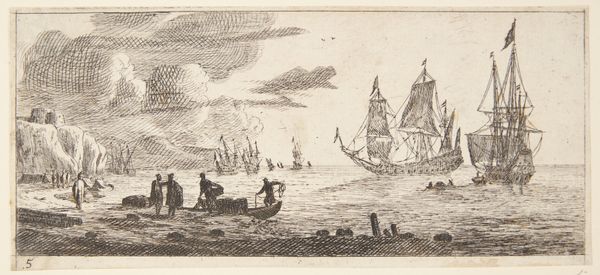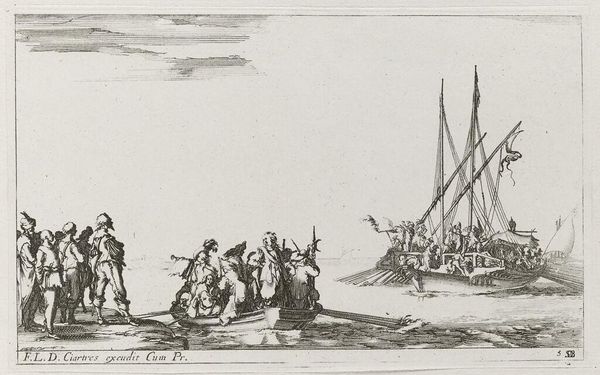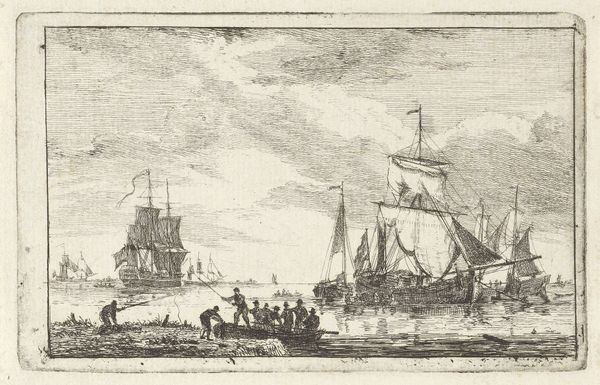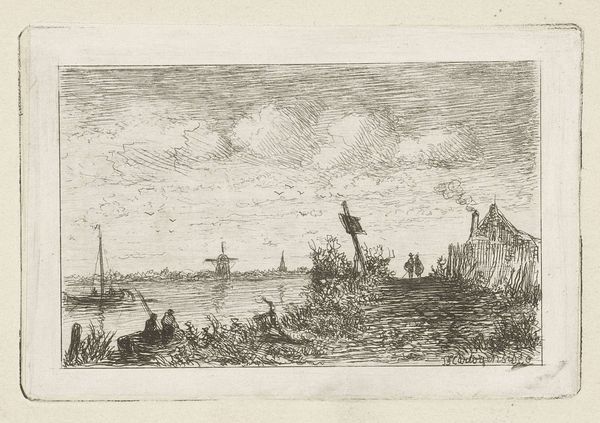
Terugkeer van de Hollandse vloot na de slag bij Doggersbank, 1781 1788
0:00
0:00
print, engraving
#
dutch-golden-age
# print
#
old engraving style
#
landscape
#
history-painting
#
engraving
Dimensions: height 94 mm, width 117 mm
Copyright: Rijks Museum: Open Domain
Curator: "Terugkeer van de Hollandse vloot na de slag bij Doggersbank, 1781," an engraving made in 1788 by Harmanus Vinkeles. It depicts the return of the Dutch fleet. What strikes you about it? Editor: The print looks rather… celebratory? All those ships, the people waving… it feels very patriotic. But being an engraving, how was something like this actually *made* back then? Curator: Consider the labor involved. Vinkeles, working in 1788, reproduced a scene initially rendered likely through painting or drawing, transforming it into something reproducible. Think of the skilled labor of the engraver, the paper production, the printing press – all feeding a demand for imagery that served political narratives. The battle itself, though technically a draw, was portrayed as a victory to bolster Dutch morale during a period of conflict with England. Does knowing that change how you view those celebratory figures? Editor: Definitely. It makes me wonder who this print was for. Was it accessible to everyone, or just the wealthy? Did it function like… propaganda, almost? Curator: Precisely! These prints were commodities. The cost of production would dictate who had access, suggesting a middle to upper class target. Now, considering its function as propaganda—a deliberate crafting of narrative through image—how might the choice of engraving itself contribute? The lines, the contrasts... does it lend a certain air of authority? Editor: Absolutely. The starkness adds to that sense of officialdom, I think. So, it’s not just about the ships and the people, but also about the economics and labor of image-making itself. Curator: Exactly. Seeing art through this lens really unveils the layers of meaning embedded in even seemingly straightforward historical depictions. Editor: This perspective has really helped me understand how materials and their context shaped this work. It’s more than just a picture; it’s a product of its time.
Comments
No comments
Be the first to comment and join the conversation on the ultimate creative platform.
